Digital Transformation for Business – Essential Guide
Even if you’re an established company that uses a myriad of digital tools, digital transformation never ends. 2023, with the massive rise of AI, is the ultimate proof that companies should always expect another digital wave.
But just what are the most critical aspects of this whole digital business transformation and digitalization space in 2024 and beyond? Well, some things are as they used to be, while others have changed due to the latest technological developments.
To help you with this journey, we’ve compiled all the essentials of digital transformation for businesses. Think of it as a useful map to help you navigate through the complexities of today’s economy.
What’s inside?
- What is Digital Transformation?
- What Industries Benefit From Digital Transformation?
- Why is Developing a Digital Transformation Strategy Important?
- What Happens to Businesses That Don’t Have a Digital Transformation Strategy?
- What Role Does Culture Play in Digital Transformation?
- Digital Transformation Challenges
- What Are the Technical Solutions Supporting Digital Transformation?
- What Does a Digital Transformation Framework Look Like?
- Digital Transformation Planning
- Digital Transformation Trends for 2024
- Digital Transformation Pitfalls / What Can Go Wrong?
- Digital Transformation Examples / How Companies are Doing it Right
- Digital Transformation Process is Not Just About the Technology but Mindset
What is Digital Transformation?
Digital transformation is the integration of digital technology into all areas of a business, fundamentally changing how you operate and deliver value to customers. It’s also a cultural change that requires organizations to continually challenge the status quo, experiment, and get comfortable with failure. However, it’s probably more accurate to describe it as a “digital journey” as this is a never-ending process for all leaders around the world. (Sorry if you’re disappointed 😉)
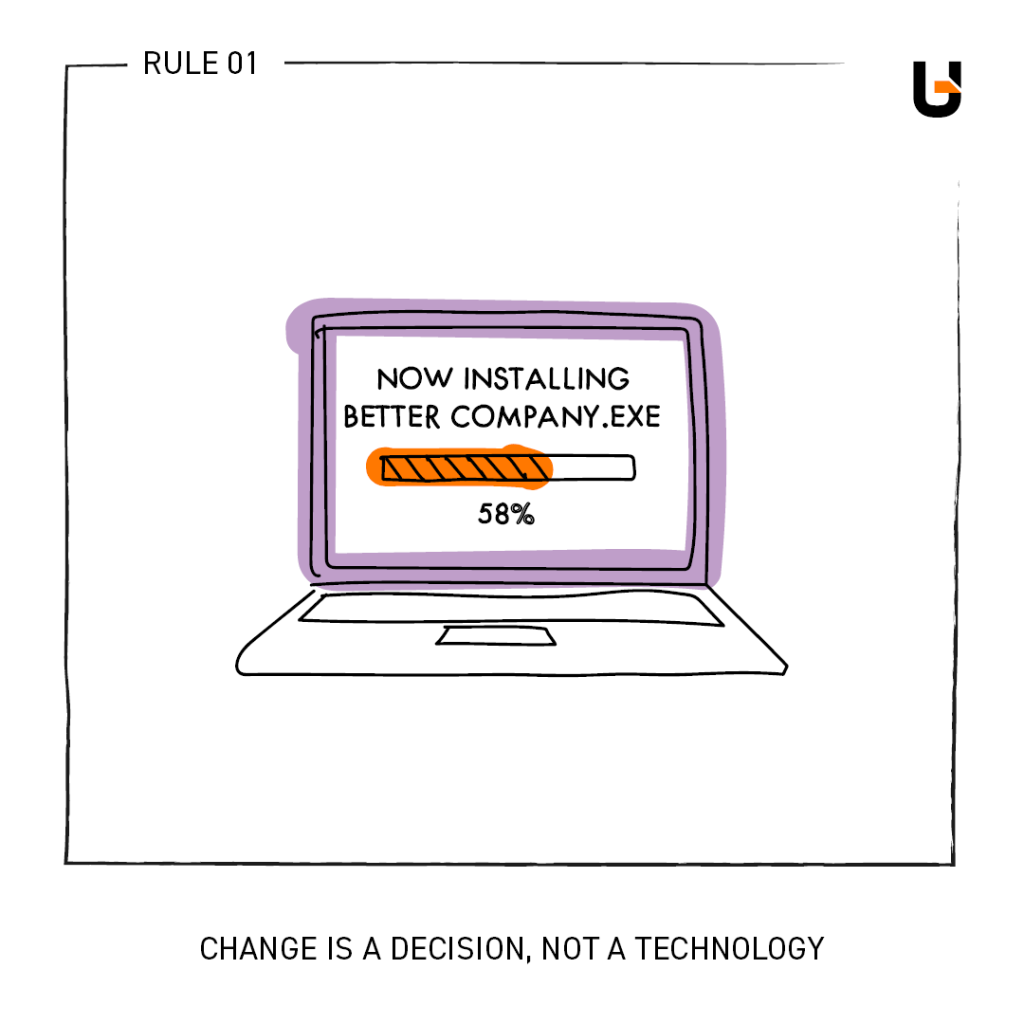
Digital transformation can encompass many areas, such as customer experience, operational processes, workforce, data and analytics, new business models, and cybersecurity. It’s no surprise then that expenditure on digital transformation technologies and services worldwide are constantly growing and are likely to reach 2.51 trillion of U.S. dollars in 2024.
What Industries Benefit From Digital Transformation?
It’s no exaggeration to say that all industries can benefit from digital transformation. Even the healthcare and banking industries, once thought to be forever offline, have embraced the digital way of life. When e-banking was in its infancy in the 90s and early 2000s, many people claimed that it couldn’t work because people wanted to see a physical bank building. Not so long ago, experts claimed that telemedicine is not possible because doctors always need to see the patient face to face.
And yet… here we are. Chatting with doctors online and transferring money via mobile apps, without even knowing where the nearest bank branch is, have both become the norm in many parts of the world.
So, yes, all industries benefit from digital transformation, but the speed at which this happens varies depending on the sector. According to studies, sectors related to consumers, such as fashion and luxury, telecom and retail in general are the most successful when it comes to their digital transformation. Lagging behind the race is the public sector, construction, alongside healthcare & pharma and wholesale. However, we can tell from our experience with various clients that these industries have taken up the challenge to transform their business and catch up with the leaders.
Learn How Your Business Can Benefit From Digital Transformation
LET’S TALK!Why is Developing a Digital Transformation Strategy Important?
The creation and monitoring of digital transformation strategies is crucial, as they provide evidence of impact and enable the company to focus on business goals. Any team can take part in digital transformation, although it simply won’t be effective in a business without the right strategy.
Digital transformation is a way to build a competitive advantage through cost reduction and optimization, process automation, and customer experience improvements, to name just a few. Through this, companies can improve agility, establish new businesses and markets, and make data-driven decisions.
Another value of digital transformation lies in the necessity of building a creative environment in the company. Digital transformation processes require agile teams, openness, a non-silo approach, and a high degree of cooperation. Building a company that supports all of these values can attract amazing talents and unlock the enterprise’s potential.
The need for digital transformation across industries is clear. Yet, it’s not always that easy and, as a result, can lead to not so pleasant business outcomes.
What Happens to Businesses That Don’t Have a Digital Transformation Strategy?
Organizations that do not engage in digital transformation face several significant risks and challenges.
First, they fall behind competitors that leverage technology for efficiency and customer satisfaction. Without digital tools and automated processes, businesses often operate inefficiently, leading to higher operational expenses and decreased productivity. This can erode profit margins and hinder the ability to scale effectively.
Additionally, companies that are resistant to such changes also lose value in their customers’ eyes, as they expect quick, convenient and personalized services today.

Those that do not transform may find it challenging to adapt to new market conditions, customer preferences, and industry trends. They also miss out on valuable data-driven insights and are at a significant disadvantage when making – or attempting to make 😉 — informed strategic decisions.
What Role Does Culture Play in Digital Transformation?
For a company to truly embrace digital transformation, fostering a culture of innovation is not just beneficial, but essential. This culture is characterized by several key traits that facilitate the organization’s digital transformation process.
Firstly, cultivating a data-driven mindset is crucial. Employees at all levels should be encouraged to base decisions on data and analytics, integrating empirical evidence and new capabilities into their daily workflows and strategic planning. This shift towards a data-centric approach can dramatically improve efficiency and decision-making.

Moreover, a culture that champions experimentation and the adoption of new technologies is fundamental. Employees should feel empowered to explore innovative tools and solutions, even if it means stepping outside their comfort zones. This openness to experimentation accelerates learning and adaptation to new digital tools.
Additionally, it is vital to implement programs that support the adoption of new technologies. These programs can provide training and resources that help employees understand and utilize emerging technologies effectively. Such initiatives not only enhance individual competencies but also drive collective growth and digital readiness for the entire organization.
Establishing a collaborative environment is also key. Digital transformation thrives in a culture where knowledge sharing and teamwork are encouraged, breaking down silos and fostering a unified approach to innovation. In our case, we implemented the team of teams approach, so if you need some inspiration, be sure to take a look at our blog post on that topic.
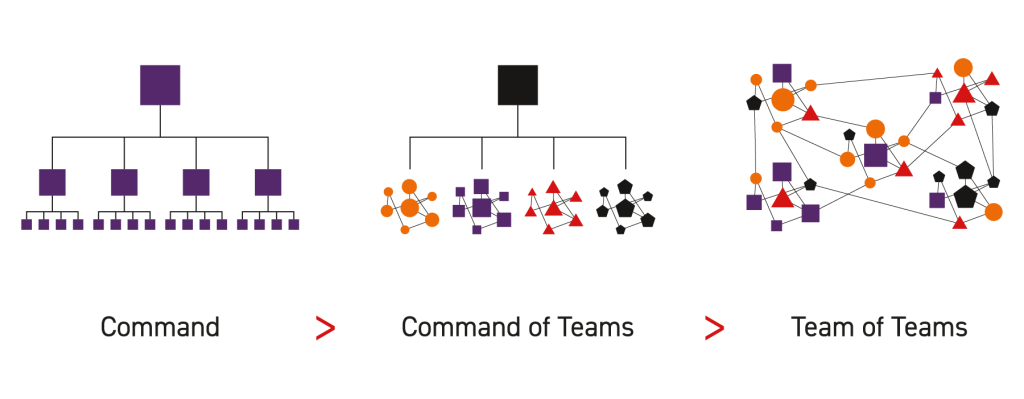
Lastly, leadership plays a crucial role in shaping this culture. Leaders should embody and promote these values, demonstrating a commitment to digital advancement and creating an atmosphere where risk-taking and innovation are not just accepted but celebrated.
Digital Transformation Challenges
The digital transformation journey is not an easy one. According to McKinsey research, 89% of companies have launched some form of digital transformation, but only 31% of the expected revenue has been realized.
Technological Challenges of Digital Transformation
Many companies operate with legacy systems that were not designed to seamlessly integrate with modern digital technologies. Integrating these systems with new technologies can be complex and time-consuming, but that isn’t the end of the story. Companies also need to ensure their employees are comfortable with and skilled in using new technologies can be a significant hurdle.
And, as organizations become more digitally connected, the risk of cybersecurity threats increases. Protecting sensitive data and ensuring the integrity of digital assets require robust cybersecurity measures, which can be challenging to implement effectively.

Operational Challenges of Digital Transformation
Implementing digital technologies often involves redefining and reengineering existing workflows. This can disrupt operations and lead to temporary decreases in productivity as employees adapt to new processes. The human element is crucial in digital transformation. Resistance to change, a lack of understanding about the benefits, and the need for cultural shifts within the organization can impede progress.
Financial Challenges of Digital Transformation
Digital transformation has many benefits, but we can’t deny that it often requires significant upfront investment in technology infrastructure, software, training, and consulting services. Although, once implemented, technological solutions will help optimize costs, medium-sized companies may face financial constraints that make this initial investment challenging.
But when you look at it as a journey, it’s a lot easier to manage. Starting with the most important or useful developments will maximize value delivery, in turn helping with finances. For example, if you’re moving from a monolith, migrating through SaaS or microservices bit by bit might help companies with limited budgets.
Risk Management Challenges of Digital Transformation
Some companies may be worried about becoming heavily reliant on external technology vendors or service providers. Managing dependencies and mitigating the risks associated with third-party relationships are essential for sustained success. On the other hand, an experienced transformation partner may prevent such risks, helping to ensure compliance with data protection regulations, comply with industry regulations and standards.
Curious About How to Overcome These Challenges?
Let’s talk!What Are the Technical Solutions Supporting Digital Transformation?
Digital transformation for business requires (surprise!) the right technology. The target set of technologies will vary depending on the industry, company size, budget and current tools in use. The tools and solutions you implement should reflect your strategy and business goals. Here are just a few of the most popular solutions used in the enterprise digital transformation process.
B2B/B2C Platforms
With more and more business – specifically the ordering, arrangement and purchasing of both products and services — B2B e-commerce platforms and B2C e-commerce platforms facilitate online business transactions between businesses (B2B) and between businesses and consumers (B2C), respectively, offering a digital storefront to showcase products or services and handle transactions efficiently.
Product Information Management Systems
PIM systems help businesses manage their product information, inventory, and lifecycle, ensuring data accuracy and consistency across all sales and marketing channels. These systems centralize product data management, making it easier to update and distribute product information across various platforms, from e-commerce websites to physical retail stores. This centralization helps maintain consistency in product descriptions, pricing, and specifications, which is crucial for maintaining brand integrity and customer trust.

Moreover, PIM systems enhance the efficiency of product data management by automating repetitive tasks and reducing the need for manual data entry, thereby minimizing errors. They also support multilingual and multi-regional content, allowing businesses to expand their reach to global markets with localized product information.
Composable Commerce
Composable Commerce is an approach that allows businesses to select and assemble various commerce solutions and technologies in a modular, flexible manner, tailoring the commerce experience to specific business needs.

This approach embraces the principle of using best-of-breed solutions, enabling businesses to choose the most suitable components for each aspect of their commerce operations, from product catalogs and payment processing to customer service and order management.
Data/AI Solutions
Data and Artificial Intelligence solutions such as AI chatbots harness the power of data analytics and machine learning to provide actionable insights, automate processes, and personalize customer experiences. In addition, convenient data analysis tools such as Power BI or Talend enable any organization to put a data-driven approach into practice.

Order Management Systems
OMS manage the entire order process from placement to delivery, streamlining order processing, inventory tracking, and customer service interactions. These systems enable real-time visibility into order status and inventory levels, ensuring that businesses can respond promptly to customer demands and market changes. With features like automated order routing and fulfillment, they reduce the likelihood of errors and delays, enhancing overall customer satisfaction.
Managed Cloud Services
Managed cloud services provide enterprises with cloud computing resources and expertise to operate efficiently in the cloud without the need to manage cloud technology in-house. This approach enables organizations to leverage microservices architecture, which breaks down applications into smaller, independent services.
As a result, agility and scalability are increased, helping businesses to quickly adapt and deploy new functionalities. In addition, serverless computing, another facet of managed cloud services, further streamlines operations by enabling businesses to run applications and services at a “per usage” level, reducing operational complexity and costs.
Cloud services also optimize performance across regions, ensuring high availability and low latency for users around the world, regardless of their geographic location. This global distribution of services ensures a seamless and efficient user experience, which is critical for businesses operating in today’s digital marketplace.
System Integration
System integration involves connecting various IT systems, software, and technologies to ensure they work cohesively, improving overall efficiency and data flow within an organization. A crucial aspect of this process is the handling of legacy systems, where integration strategies often involve the use of APIs to bridge the gap between outdated and modern systems.
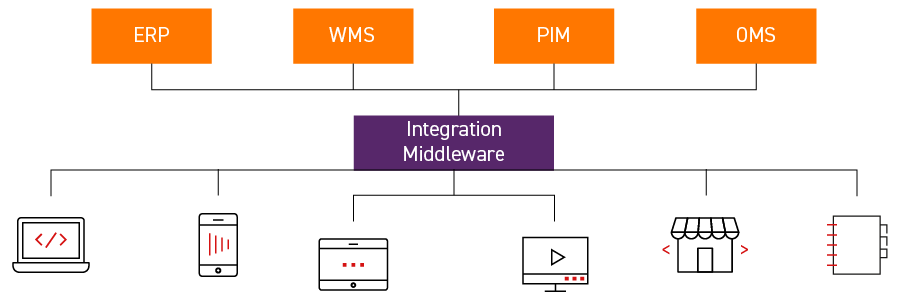
System integration also facilitates adoption of new systems and technologies, allowing businesses to scale and evolve without being hindered by technological constraints. This ability leads to increased agility, enabling businesses to respond swiftly to market changes and customer demands.
Cybersecurity Solutions
Essential for protecting digital assets, cybersecurity solutions safeguard businesses against digital threats, ensuring data integrity and compliance with regulations. In an era where cyber threats are becoming increasingly sophisticated, these solutions play a pivotal role in detecting and preventing attacks such as data breaches, ransomware, and phishing attempts. Advanced cybersecurity strategies employ a blend of AI and machine learning to proactively identify vulnerabilities and respond to threats in real-time, thereby minimizing potential damage.
Furthermore, with the growing emphasis on data privacy laws such as GDPR and CCPA, cybersecurity solutions not only protect against malicious attacks but also ensure that businesses adhere to legal standards in data handling and privacy.
Customer Relationship Management Software
CRM software helps businesses manage customer data, interactions, and relationships, leading to improved customer retention and sales growth.
It provides insightful analytics and reporting tools that help businesses understand customer behaviors, preferences, and trends. By leveraging this data, companies can personalize their marketing efforts, tailoring their communication and offerings to meet the specific needs and interests of individual customers.
Furthermore, CRM solutions streamline various customer interaction processes, from lead generation to after-sales support. CRM systems also play a crucial role in sales pipeline management. They enable sales teams to track and nurture leads through each stage of the sales process, improving conversion rates and optimizing sales strategies.
What Does a Digital Transformation Framework Look Like?
While digital transformation can vary widely based on the unique challenges and needs of each organization, a review of successful implementations reveals some common themes. A digital transformation framework provides a structured approach to moving from traditional business models to ones that are digitally focused and agile. This framework typically includes a series of steps or stages designed to guide an organization through the complexities of integrating new digital business models and technology into all aspects of its operations.
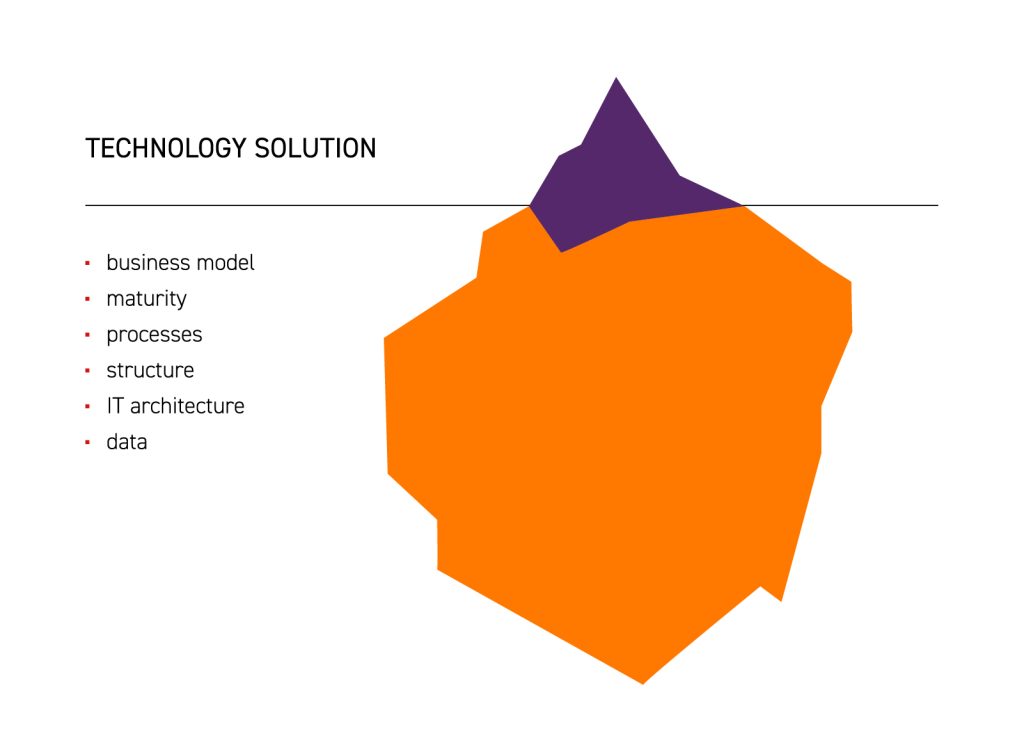
It’s not just about adopting technology; it’s also about rethinking existing business processes, culture, and customer experiences in the context of digital capabilities. In essence, a digital transformation framework serves as a roadmap that helps companies navigate the journey from conventional practices to a digitally empowered future, ensuring alignment with the company-wide strategic vision, goals, and market demands.
A digital transformation framework starts with the right business strategy, and planning. How do you do that? Let’s find out!
Digital Transformation Planning
Planning a digital transformation strategy is a complex process that needs to cover many aspects of the company’s operations. You probably won’t be able to do everything at once or even in a month (as you already know, digital transformation is a never-ending process), but it’s still a good idea to create a roadmap that includes the steps to address all aspects of digital transformation.
Build Digital Transformation Leadership
Every digital transformation initiative should start with leadership. C-suite leaders need to align with the digital transformation topics and build a common language around accelerated digital transformation topics. Fundamental terms such as artificial intelligence, machine learning, digital marketing or data engineering may be understood very differently by the company’s leadership.
That’s why leaders should develop what is called a “digital mindset” and embrace at least basic knowledge on various topics such as digital transformation outcomes, presence, analytics, statistics, the modern workplace and much more. You can read more about this in “The Digital Mindset: What It Really Takes to Thrive in the Age of Data, Algorithms, and AI” written by P. Leonardi, T. Neeley.
Culture Change and Communication
Prepare for massive cultural changes because sometimes employees are reluctant to make significant improvements, which hinders any transformation. They may not understand the benefits of digital changes, or they may be afraid of losing their jobs or taking on more responsibilities. Culture must be at the heart of successful digital transformation projects.
It’s also a good idea to prepare your employees beforehand. Effective communication will help achieve this goal. Develop a clear training plan, provide frequent updates, and stay consistent with assurances. Encourage employees to propose new solutions and improvements, and allow them to experiment and test.

Determine the Resources You Need to Run a Digital Transformation Initiative
Digital transformation is not just a matter for the IT department. It requires a cross-functional team involving all key departments, as the process changes will affect most employees. You’ll need to include product owners, subject-matter experts, UI/UX designers, data experts, software engineers… The composition of the team will depend on the nature of the solutions you want to implement. Once you understand this, you can assess your resources and talent needs.
Building a talent roadmap for digital transformation and innovation is one of the most important steps in the entire process. You should consider building an internal digital talent bench, as it is more effective for technology experts to work closely with business and operations. However, since digital experts are in demand by many organizations, and it may simply not be possible to fill all the necessary roles due to budget constraints, you may still need to outsource some of the tasks and seek support from a transformation partner.
Adopt Agile Approach and Flexible Teams
We’ve being hearing about the Agile approach for years (especially in the IT software development) but this method is more important than ever. With fast-paced changes in the global digital business model and technology environment, companies must become agile to catch up with all the changes and stay competitive. The Agile development approach leads to 27% greater productivity compared to other development methods, not to mention reducing schedule slips by 30%. Still, remember that being agile is not simply about rituals like dailys, sprint plannings or reviews. It’s also important to properly set objectives, set up the teams or enforce accountability for results.
Digital Transformation Trends for 2024
Each year we observe the landscape of digital transformation as it continues to evolve at a breathtaking pace. This year, we’re seeing a fusion of cutting-edge technologies and innovative strategies that are setting new standards in efficiency, customer engagement, and competitive advantage.
Marketplaces
In 2023, the online marketplaces accounted for over one-third of global online shopping orders. We also witnessed an interesting trend in the growth of B2B marketplaces, which function as digital platforms where businesses can exhibit their offerings.

One example is Amazon Business, which has become a global leader in the B2B marketplace segment, with 36% of business buyers using the platform. Ebay was in second place, with a popularity of 30%, while 27% buy on the Chinese marketplace Alibaba. This setup significantly simplifies access to a diverse range of products and suppliers for companies. Gone are the days of depending solely on physical catalogs or middlemen. By simply logging onto these platforms, businesses gain access to an extensive array of products and services, streamlining their procurement processes.
AI is Taking Off
2023 was marked with the rise of artificial intelligence. With 101 tools developed every month, businesses have noticed great opportunities in incorporating data science and AI in digital business models.
We’ve been observing many great AI in business use cases including, but not limited to, advanced recommendation systems, real-time data analysis with business intelligence tools or sales and demand forecasting for better stock management.
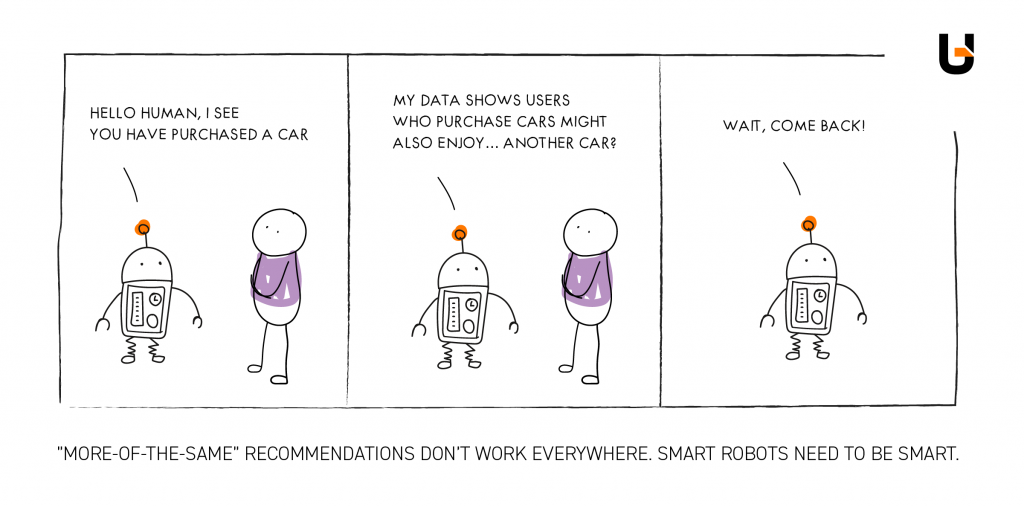
In the upcoming months and years, generative AI tools will become a business partner and companion for digital transformation. If 25% of tasks can be automated, workers can focus on more important jobs.
Omnichannel is Still a Thing
Omnichannel has been around for years, but it’s still an important piece of digital transformation. On the one hand, technology is changing, new channels are growing and companies need to keep up with that. On the other hand, there are businesses which are still struggling with proper omnichannel retail implementation for numerous of reasons, be they technological, operational or personal. 2024 and beyond is the time to finally overcome omnichannel challenges, and guess what – we even wrote an e-book about it. 😊

Data and Analytics Are Joining the Digital Transformation
There’s no better time to finally set up proper data architecture and flow in the company. At this point, most businesses realize that data should be easily consumed across the entire organization. More than just helping to make well-informed decision on products’ development, marketing or pricing, companies should also develop AI/data-based projects. Yet, according to McKinsey, around 70% of the development effort to create AI-based solutions is to simply harmonize data.
Organizations should determine now which data matters, create data architecture, and implement business intelligence and data tools, so information can be properly stored, transformed and analyzed across the company.
Digital Transformation Pitfalls / What Can Go Wrong?
Digital transformation in business is the journey every modern business is embarking on, driven by the promise of revenue growth, efficiency, and success. However, this path may also lead to frustrations and disappointments. If you also feel confused, continue reading. 😊
Implemented Solutions Haven’t Solved All Company Problems
Some leaders expect that digital transformation means implementing one or two systems to simply grow their business. While technology is an essential part of an effective digital transformation strategy, it’s just the tip of the iceberg. It is more complex and often leads to fundamental changes in processes and even the business model. The key is to integrate all technologies, solutions, processes, and other key business aspects into a smoothly functioning machine.
Employees Would Rather Not Use New Solutions and Stick to Old Methods
People don’t like changes in general. It often makes them insecure and anxious. Digitalization and automation leads to challenging questions and company must be ready for that. As you already know, it’s worth preparing your team – organize a series of workshops, engage your employees in the digital transformation process and show them that this change is an opportunity for their career as well.

You Implemented Technology, But After a Short Time You Need to Change It
Immediate advantages are usually more appealing than benefits postponed over time. However, it’s better to fight this cognitive bias and think with a longer perspective in mind. Some digital solutions may seem perfect today, but it’s better to ask yourself some valid questions: is this solution future-proofed? Can I grow my business with it? Can I easily integrate with other tools?
Digital Transformation Examples / How Companies are Doing it Right
Digital transformation may not be the smoothest road, but there are many companies that are harnessing the power of technology to take their business to the next level. Let’s take a look at some great digital transformation examples from different industries that prove digital transformation knows no boundaries. These companies have gradually digitized various aspects of their business and are now reaping the benefits of the changes they have made.
A Modern B2B Platform for a Construction Materials Manufacturer
Atlas is one of the largest manufacturers of construction chemicals in Poland and, due to rapid growth, the company sought better digital services for its B2B companies.

As a result, the company implemented a modern commerce platform, built on Unity.Commerce and saw an 80% increase in the number of online users in the first few months of the platform’s usage. Now, 70% of all B2B orders are processed through the platform, which is customized for the company’s specific target audience.
Cross-Border E-commerce for Furniture Maker
Having been in the furniture and home decor market for 30 years, Black Red White has understood the need and opportunity for digital transformation initiatives. An example of ongoing digital transformation is the company’s expansion abroad with marketplace. In just two months, BRW was able to start a cross-border journey with a popular home products’ marketplace in Germany. And all this was achieved without any major capital expenditure!

New Integration Architecture for a Pharmaceutical Company
Drug manufacturing is a complex process with high standards of safety and reliability. This requires not only a dedicated and qualified team, but also top-notch technology. Adamed is fully aware of this, so it implemented new, powerful IT architecture to its plethora of critical systems, including ERP, WMS, LIMS or MES. As a result, the company got a scalable and reliable solution that is easy to maintain and develop in the future.

Data Warehouse for a Clothing Chains for Children
Komex S.A., owner of the 5.10.15 clothing brand, understands that a single source of truth is critical to making informed business decisions. Quickly analyzing data, verifying hypotheses and creating reports in the blink of an eye shouldn’t be a daunting task nowadays. This is where data warehouse technology comes in to improve the reporting process and equip the company with the ability to perform advanced analytics.

Digital Transformation Process is Not Just About the Technology but Mindset
Digital transformation is a continuous endeavor that changes your processes, operations, and business model. To remain competitive and resilient in a rapidly changing digital business environment, there is no other way but to develop digital transformation initiatives. Leaders must accept the fact that constant change is a new reality and help their people adapt and navigate in the ocean of the unknown. They should also remember that digital transformation for businesses is not a goal in itself, but rather a way to achieve other business goals.
If you are feeling confused about digital business transformation strategy and wondering where to start, send us a message, and we will use all our expertise from transforming businesses for the past 25 years to help you overcome your struggles.








